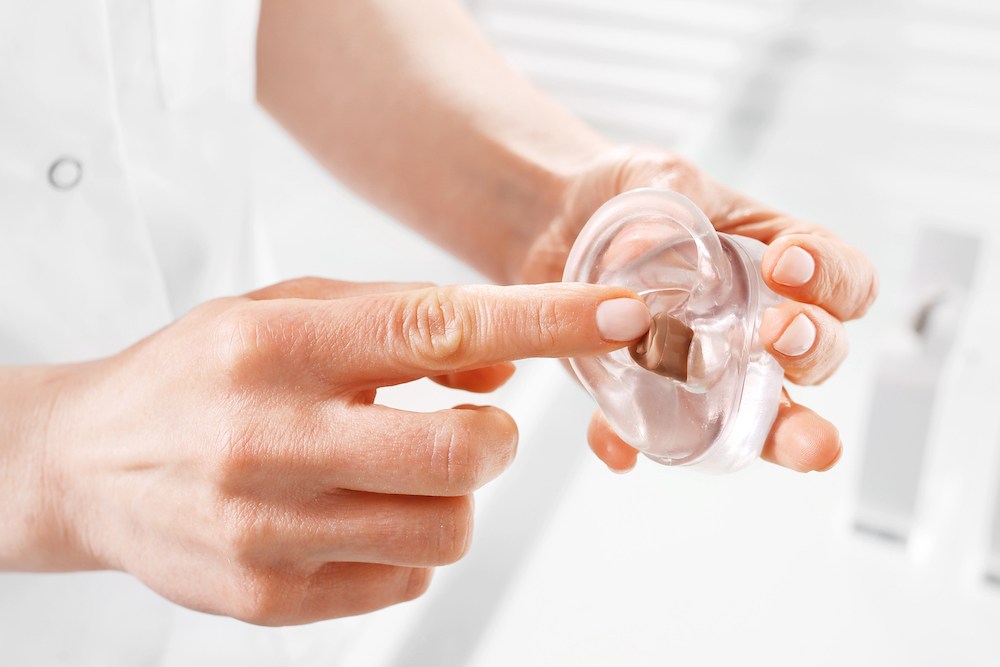Tips for Managing Hearing Aids During Fall Activities
Fall brings plenty of reasons to spend time outside, from weekend hikes to

By: admin | July 29, 2025
Hearing aid companies now have access to information they never had before. Every time someone adjusts their hearing aids, changes programs or uses different features, that data gets collected and analyzed. This means manufacturers can see patterns in how thousands of people actually use their devices in real life, not just how they perform in a lab. They’re learning which settings work best in noisy restaurants, what features people use most often and how hearing aids perform in different environments throughout the day.
This wealth of information is helping create hearing aids that work better for more people right out of the box. Instead of relying on guesswork about what users need, companies can design devices based on actual usage patterns from people with similar hearing loss and lifestyles. The result is hearing aids that require fewer adjustments, perform better in challenging situations and are easier to use. As more data becomes available, we’re likely to see hearing aids that can predict what you need before you even realize you need it, making good hearing more automatic and less work for you.
Big data is transforming how hearing aids are designed and improved. By collecting information from thousands of users, manufacturers and audiologists can identify what works well and what could be better. This approach brings several advantages:
Data collection happens in several ways. Many hearing aids record information about usage patterns, environments and adjustments you make to settings. For example, the devices may log how often you switch between programs, how long you wear them each day and how much background noise is present in different situations. This kind of tracking helps developers understand what listening environments are most common and which features are used most often.
Some devices also connect to apps or other accessories that track your listening habits and gather feedback about your experiences. These apps often allow users to rate sound quality in real time or report when something feels off, which provides even more context for improving future updates. In some cases, the apps can also adjust hearing aid settings automatically based on your preferences and patterns over time.
Surveys and questionnaires offer another layer of detail. After trying a new device or update, users may be asked to describe what worked well and where things fell short. This kind of direct input helps designers focus on features that matter most to wearers. Altogether, this approach is similar to how fitness trackers collect data to improve health support, only instead of counting steps or monitoring heart rate, the focus here is on hearing performance in the real world.
Hearing devices and accessories collect a wide range of information to help make your listening experience smoother and more personalized. They monitor how many hours you wear them each day which gives insight into your daily routines and when you rely on your devices the most. These devices also identify the types of sound environments you are in whether it is a quiet room a busy street or a noisy restaurant so they can adjust settings automatically to match your surroundings. Tracking how often you change the volume or switch between programs helps manufacturers understand your preferences and challenges throughout the day.
Some hearing aids go even further by recording details about background noise levels and the direction sounds come from. This allows the devices to better focus on important sounds like conversations while reducing distractions. Information about when and how often you use special features like noise reduction or speech focus provides valuable feedback that guides improvements in these functions. Altogether this data helps create hearing devices that respond more naturally to your unique listening needs and deliver clearer more comfortable sound no matter where you are.
Designing hearing aids that perform well in everyday environments is essential. Real places like classrooms, parks or family gatherings each present unique sound challenges. When manufacturers use data from people wearing hearing aids in their daily lives, they can identify which features provide the most benefit.
Devices designed with real-world use in mind are more likely to meet your needs. Features based on actual listening environments can help you follow conversations and feel at ease wherever you go.
Big data recognize which difficulties are most common for people with hearing loss. For example, some people stop using their hearing aids after a few months, while others struggle in noisy places or find certain features confusing.
To get the best results from your hearing aids, keep track of situations where you have trouble hearing and share these details during your appointments. This feedback helps us adjust your settings or suggest new features. If you find any part of your device difficult to use, ask about support options or training. Regular communication ensures your devices continue to meet your daily needs.
When specialists and manufacturers study how people use their hearing aids each day, they start to see important patterns. These patterns reveal which features are genuinely helpful in real-world situations and which may need improvement. For example, if many users consistently rely on automatic volume control or noise reduction, those features receive more attention during future updates and refinements. This approach ensures development is focused on what people truly need rather than on theoretical benefits.
Your daily habits also play an important role in shaping new devices. Details like how long you wear your hearing aids each day or how often you adjust settings provide valuable insight into what is working well and what could be improved. When you share feedback through an app, at follow-up appointments or in surveys, you help guide the creation of features that better match your needs. The more real-life information designers and audiologists have, the closer they can come to making hearing aids that truly support everyday use.
Machine learning is making it easier to find patterns in hearing aid data. Computer programs can quickly analyze large amounts of information to identify which features help most in noisy places, predict when someone may need a setting adjustment or spot early signs that a person may stop using their hearing aids. This analysis goes beyond what a person could review manually, finding connections and trends across thousands of users that might not be obvious at first.
This technology allows for faster improvements and more effective devices by helping designers focus on features that truly make a difference in daily life. Instead of relying on trial and error, they can use real data to guide updates and fine-tune performance. It also gives better tools to recommend changes that fit your needs more closely. With these insights, adjustments can be more personalized, helping you get clearer sound and more comfort in the places you spend the most time.
Personalized sound settings create a listening experience tailored to your unique needs. Your device can adapt to different places, like busy restaurants or quiet living rooms, so you feel comfortable throughout the day.
To make the most of personalized settings, share details about your typical day your audiologist, including which sounds are hardest to hear and which voices or noises you find difficult. Give feedback on how well your current settings work in different environments and ask about features that adjust automatically based on your location or activity.
Following conversations in noisy places is a common struggle for many hearing aid users. Data shows that background noise and multiple speakers are major factors. Traditional hearing aids sometimes pick up all sounds equally, making it hard to focus on the person you want to hear.
New technology uses real-life listening data to help separate speech from background noise more effectively. If you still have trouble in busy places, ask your specialist about settings or features designed for these environments. Data-driven solutions can make conversations clearer and reduce frustration.
Comfort is a key concern for anyone wearing hearing aids daily. New designs use feedback from users and information about usage patterns to make improvements that enhance comfort.
Features like softer materials, lighter designs and better fit are developed based on user input. Data also shows when certain activities or times of day may cause discomfort, guiding future design changes. Many hearing aids now include automatic adjustments that respond to your environment and habits.
Your comments about comfort help shape features like ear tip shapes or pressure relief options. When many users mention similar issues, manufacturers are more likely to make changes that benefit everyone.
Protecting your personal information is a key focus for both manufacturers and audiologists. They use a variety of strong security measures to keep your data safe at every step. This includes encrypting information so it cannot be easily read if intercepted, storing data on secure servers with strict access controls, and limiting who can view or handle your information. Regular security audits and system checks are also performed to identify and fix any vulnerabilities before they can be exploited. These layers of protection work together to create a safe environment for your data.
You have full control and the right to know exactly how your information is being used and who has permission to access it. Transparency around data handling is important so you can trust the technology you rely on. These protections are designed to help you feel confident and comfortable using advanced hearing aids without worrying about your privacy.
This new approach to hearing aid design puts real-life experience at the center. Because manufacturers now understand how people actually use their devices every day, they can focus on features that make a meaningful difference in everyday situations. This leads to hearing aids that fit more naturally into your life, responding better to changing sounds and environments without constant manual tweaks. As the technology continues to evolve, you’ll benefit from devices that feel more intuitive and less like a technical challenge.
If you’re curious about how these advances can improve your hearing experience, we’re here to help. Contact Flynn Associates in Massachusetts at one of our convenient locations, including Concord at (978) 759-3540, Plymouth at (508) 923-7503 or Wellesley at (781) 943-5040. We can guide you through the latest hearing aid options tailored to your lifestyle and answer any questions you might have.

Fall brings plenty of reasons to spend time outside, from weekend hikes to
By: admin | October 20, 2025

Hearing aid companies now have access to information they never had
By: admin | July 29, 2025

Your hearing aids work hard every day to help you stay engaged in
By: admin | June 20, 2025
